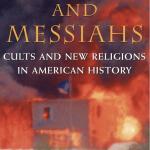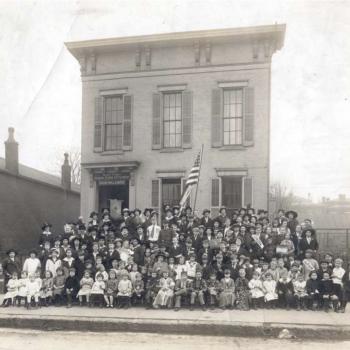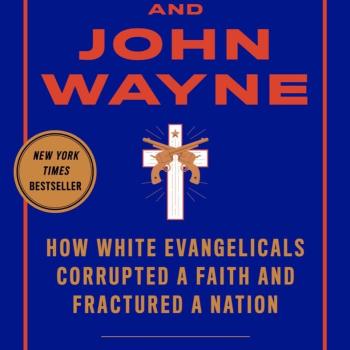
I am delighted to share this guest post on Southern Baptist (SBC) women by Jordann Heckart, a doctoral student in the History Department at Baylor University. Her research interests include eighteenth-century America, women and gender, and religion.
In June, Southern Baptist delegates will vote for a second time on the proposed “Law Amendment” at the SBC 2024 Annual Meeting in Indianapolis. If approved, a new requirement will be added to Article III of the SBC Constitution, which outlines the requirements for a church to affiliate with the SBC and send messengers to the annual meeting. The amendment states that a church must “affirm, appoint or employ only men as any kind of pastor or elder as qualified by scripture.” This event is the most recent example of how the SBC is responding to the role of women in ministry.
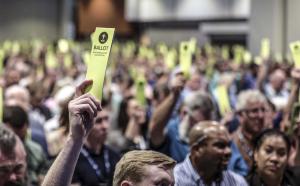
If you grew up in the SBC or know anything about Baptist history, then you have probably heard about Lottie Moon and Annie Armstrong. Both women are remembered for their work with foreign and domestic (home) missions, respectively, as well as with the Woman’s Missionary Union (WMU), an auxiliary organization of the SBC. The SBC collects the Lottie Moon Christmas Offering and the Annie Armstrong Easter Offering annually to support missions. These two fundraisers have historically provided the SBC with the largest donations and sustained the denomination through financial hardships.
However, it is much less likely that you know about an eighteenth-century Baptist woman named Martha Stearns Marshall. Martha is one of the few colonial women noted for helping establish the Separate Baptist tradition in the South, predecessors to the SBC.
The dearth of information about Martha has contributed to the divergent ways she has been remembered, or forgotten, by Baptists. Her portrayal thus serves as a barometer for Southern Baptist attitudes towards women’s participation in formal ministry.
Martha’s ministry has largely been relegated to a footnote, or rather an appendix, in nineteenth- and twentieth-century denominational histories. Baptist historians prior to 1979 largely downplayed the role of Martha to maintain respectability. Even more, since the 1980s the SBC has ignored the memory of Martha due to its complementarianism. In contrast, since 2007 the organization Baptist Women in Ministry (BWIM) has celebrated Martha as a female preacher.
Historians have largely drawn from the same quotation describing Martha because there are few sources about her. The quote originally appeared in The Georgia Analytical Repository (1802) as an appendix to Abraham Marshall’s biographical sketch of his father, Daniel Marshall. Although this is the main source of information about Martha, it is not clear who wrote the appendix. The initials “V.S.” are ascribed to it. The quotation states,
Mr. Marshall had the rare felicity of finding in this lady, a Priscilla, a helper in the Gospel. In fact, it should not be concealed that his extraordinary success in the ministry, is ascribable in no small degree, to Mrs. Marshall’s unwearied, and zealous co-operation. Without the shadow of an usurped authority over the other sex, Mrs. Marshall, being a Lady of good sense, singular piety, and surprizing elocution, has, in countless instances, melted a whole concourse into tears, by her prayers and exhortations! (29)
In Martha’s own time, her ministry was described in terms of exhorting. Historian Catherine Brekus, in Strangers and Pilgrims (1998), identified Martha as one of hundreds of women in the eighteenth and nineteenth centuries who identified as either exhorters, women evangelists, or female preachers. Brekus explained, “an ‘exhorter’ was an informal evangelist who publicly admonished or encouraged others to repent. Unlike ordained clergymen, exhorters had no institutional authority: they did not have the right to deliver formal sermons explaining biblical texts, and they usually spoke from the pews rather than the pulpit” (48). Among Separate Baptists, the term exhorter was applied to men and women, unlike the term preacher, which was reserved for men.
The Marshall family, along with Shubal Stearns, Martha’s older brother, settled in Virginia in 1755. As Separate Baptists they held to Calvinist ideals, supported revivalism, and stressed the conversion experience. Next, the Stearns-Marshall group moved to North Carolina where they established the Sandy Creek Church and Association, by the same name. The two families founded multiple churches in the region. Then, Daniel and Martha traveled further south into South Carolina eventually settling in Georgia by 1771.
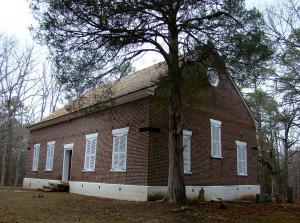
During this period the older Regular Baptists and the established Anglicans in the region considered the Separate Baptists to be an unruly group because they were uneducated, they expressed extreme emotions during revivals, and they allowed women to speak in public and participate in church government. Regular Baptists descended from the English Particular Baptists. They were confessional and Calvinist although they were skeptical of Separate Baptists’ commitment to this theology. By 1787, the Separate and Regular Baptists merged in the South and became the United Baptists, which is considered the precursor to the Southern Baptist Convention established in 1845.
One aspect of this merger entailed Separate Baptists adopting the Regular Baptists’ views on women. They no longer allowed women to speak in public or serve as deaconesses or eldresses. Local congregations had elected women to these positions. Deaconesses provided aid to the sick and needy, whereas eldresses assisted in ministering to other women through baptism and teaching. They also shared women’s concerns to the male elders. This transition is in keeping with the trend historian Susan Juster identified among New England Separate Baptists in the same period. Male leaders suppressed their earlier egalitarian practices as they transitioned from a loosely organized sect to a denomination seeking political power.
Compiling a denominational history constituted an attempt to institutionalize and legitimate the Baptist tradition. Early compilers of Baptist history were ministers. These authors either do not mention Martha’s ministry—like Isaac Backus (1784) and Morgan Edwards (1771/2)—or they merely reprint the 1802 Appendix without further comment, like Robert B. Semple (1810), David Benedict (1813), and James B. Taylor (1838). These denominational historians neglected to describe Martha’s ministry presumably to maintain respectability by downplaying the role of early Separate Baptist women. Instead, when Martha is referenced, it is as the wife of Daniel Marshall.
In the twentieth century, Baptist historians started to engage with Martha to describe early Separate Baptists’ views on women. These works represent a transition toward the professionalization of the historical discipline within the denomination. George Washington Paschal (1930), Leah Townsend (1935), and William Lumpkin (1961) were Baptist insiders serving as local pastors and faculty at Baptist institutions. Townsend and Paschall incorporated excerpts from the 1802 Appendix and described Martha’s exhorting as offending the Regular Baptists. Lumpkin characterized Martha as “a woman of stalwart character” (22). However, none of these historians expanded upon the title exhorter or provided any new details about Martha.
Compilers of denominational history from the 1770s to the 1970s have thus largely not known what to do with Martha. While they preserved the 1802 Appendix, they did not expand on what her ministry entailed as an exhorter. Martha was not referred to as a preacher until 1979 by historian H. Leon McBeth in Women in Baptist Life. McBeth was one of the few Baptist historians writing about women at this time. This work was published the same year “The Controversy” began in the SBC between self-described moderates and conservatives.
Since 1979, SBC leadership has passed multiple resolutions and articles to limit the role of women in the church. First, in 1984, the Convention passed Resolution No. 3 affirming women’s service in the church, except in the case of “pastoral functions and leadership roles entailing ordination” (65). Then in 1998 and 2000, the convention adopted amendments to its statement of faith, The Baptist Faith and Message. First, they approved Article XVIII on “The Family” that emphasized male authority and female submission in marriages. Then, they altered Article VI on “The Church” by limiting the pastorate to men. For two decades, SBC leaders reconstructed the denomination’s views on the role of women to align with complementarian ideals.
The SBC’s position on women in ministry correlates to the denomination forgetting Martha. She is not mentioned in numerous histories of the Baptist tradition from the 1980s to the early 2000s. The SBC does not hold a special offering or an annual event to commemorate her. Searches for Martha on the websites of the SBC and the Baptist Press yielded no results. The only example of a reference to Martha by an SBC institution occurred in a 2010 DVD series on Women in Church History. This series was created for Southwestern Theological Seminary’s “Seminary Studies for Student Wives.” In this case, the memory of Martha is only deemed relevant for pastor’s wives.
In contrast, the BWIM champions Martha as an early example of a female preacher. The organization was established in 1983 during the moderate-conservative controversy in the SBC. In their “40th Anniversary Booklet,” BWIM situated their founding within the broader context of the Equal Rights Amendment and the debate within the Convention concerning the role of women. A decade later two new Baptist denominations formed in part as a response to the SBCs views on women. First, the Southern Baptist Alliance (now Alliance of Baptists) was established in 1987. Then, the Cooperative Baptist Fellowship (CBF) formed in 1990. Two years later, the BWIM severed ties with the SBC and moved their annual meeting to align with the CBF’s General Assembly. Today, the Alliance of Baptists and the CBF affirm the ordination of women.
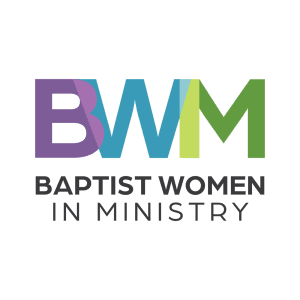
In 2007, BWIM established February as “Martha Stearns Marshall Month.” During this month, the organization encouraged congregations to invite women to preach. The first year, fifty-five churches reported participating. A decade later 211 churches joined by filling their pulpits with women preachers.
Then, in 2019, the BWIM renamed the month “BWIM Month of Preaching” and added three more historic female preachers to the lineup: Edna Lee de Gutierrez, Ella Pearson Mitchell, and Helen Barrett Montgomery. The organization developed bulletin inserts, coloring pages, and hymns for congregations to use in their Sunday services.
Finally, in 2023, BWIM again renamed the month “BWIM Month of Advocacy” and moved it to March to align with the national Women’s History Month. This most recent change was intended to encourage congregations to do more than simply have a woman preach in their church once a year. The organization created a list of action steps local congregations can engage in to support and celebrate women in ministry.
The bulletin insert for Martha provides a brief history of her and Daniel’s ministry. It explains that although Daniel was ordained, they were both preachers. It goes on to assert that Martha’s legacy continues through the work of modern Baptist women preachers. The organization grounds the Month of Advocacy in the history of the Baptist tradition by linking Martha to current female preachers. However, the term “preacher” was a gendered term in the eighteenth century largely reserved for men, as it is today among many conservative Christians, so this emphasis too constitutes a reworking of her legacy.
When historical records are scarce, the memory of a figure becomes malleable. The lack of information about Martha coupled with polarizing views on women’s roles has resulted in her work being largely ignored, relegated to an honorable mention, or championed as female preaching. Baptist organizations that affirm women’s ordination and service in ministry have reclaimed the life of Martha to celebrate her as an early representative of the Baptist tradition’s views on women. In contrast, denominational historians have downplayed her ministry, and the SBC has largely forgotten Martha Stearns Marshall.



